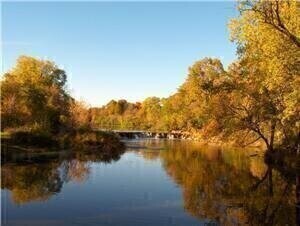Water/Wastewater
Removing Weirs and Restoring Wetlands Can Aid Ailing Rivers
Mar 23 2023
Rivers play a critical role in sustaining life on Earth. They support an array of ecosystems, from the fish and aquatic plants that inhabit them to the animals and humans that depend on them for drinking water, irrigation, and recreation. However, human activity has had a profound impact on rivers, from the construction of dams and weirs to the pollution of waterways. Some experts suggest that two effective means of river conservation are the removal of weirs and the restoration of wetlands.
Weirs are structures built across rivers to manage water flow, often to provide hydroelectric power or for irrigation purposes. While weirs have benefits, they can also harm rivers by disrupting natural flows and impeding fish migration. Weirs also create artificial pools and alter the physical structure of rivers, which can have negative effects on water quality, habitat, and biodiversity.
Removing weirs can have a significant impact on river health. By restoring natural flows, rivers can regain their ecological functions, which include supporting fish populations and maintaining healthy habitats. For example, the River Chew in Somerset, UK, saw an improvement in its health after weirs were removed. The natural flow was restored, and connectivity for fish populations improved. This resulted in an increase in the number of fish species and individual fish, which in turn had a positive impact on the entire river ecosystem.
Furthermore, removing weirs can also benefit recreational activities such as canoeing, kayaking, and fishing. Restoring the natural flow and habitat of the river provides a more diverse and exciting experience for water enthusiasts. This can have an economic benefit for local communities, as more people are likely to visit and spend money in the area.
Another approach to improve river health is the restoration of wetlands. Wetlands are highly productive ecosystems that provide many essential ecosystem services, including water purification, flood control, recreation, carbon sequestration, and biodiversity restoration. They play a critical role in supporting wildlife, particularly birds, fish, and insects.
Wetlands act as natural water filters by trapping pollutants and excess nutrients, preventing them from entering rivers and causing harmful algal blooms. They also help to regulate water flow, reducing the risk of floods and droughts. During heavy rainfalls, wetlands act as a sponge, absorbing excess water and releasing it slowly, reducing the impact of floods downstream.
Wetlands store up to 30% of the world's terrestrial carbon, making them essential in mitigating climate change. They are also essential habitats for biodiversity, supporting many plant and animal species. The restoration of wetlands can help to recreate or enhance habitats for species that have been lost due to human activities such as land-use change, pollution, and fragmentation.
In addition, wetlands can provide excellent recreational opportunities for the people who live nearby. Wetlands are great places for bird-watching, fishing, and other outdoor activities, which can have a positive impact on mental and physical health. This can result in economic benefits for local communities as well, as more people are likely to visit and spend money in the area.
The combination of removing weirs and restoring wetlands can have an even greater impact on river health. By restoring natural flows and habitats, rivers can regain their ecological functions and support a diverse range of plant and animal species. This, in turn, can have a positive impact on human communities that depend on rivers for drinking water, irrigation, and recreation.
Furthermore, the restoration of wetlands can also help to reduce greenhouse gas emissions, mitigate climate change, and provide economic benefits to local communities. The restoration of wetlands can also help to reduce the risk of flooding and droughts, making them an essential tool for water management.
In conclusion, removing weirs and restoring wetlands can have a significant impact on river health. By restoring natural flows and habitats, rivers can regain their ecological functions and support a diverse range of plant and animal species, as well as providing many essential ecosystem services. Wetlands are particularly important in this regard, as they help to purify water, regulate water flow, mitigate climate change, and support biodiversity. The restoration of wetlands can also provide excellent recreational opportunities for local communities, which can have positive impacts on mental and physical health.
Therefore, it is essential to prioritize the removal of weirs and restoration of wetlands as part of river management strategies. This requires a collaborative effort between government agencies, local communities, and conservation organizations. Through careful planning and implementation, we can ensure that our rivers and wetlands are healthy, resilient, and sustainable for generations to come.
Digital Edition
AET 28.2 April/May 2024
May 2024
Business News - Teledyne Marine expands with the acquisition of Valeport - Signal partners with gas analysis experts in Korea Air Monitoring - Continuous Fine Particulate Emission Monitor...
View all digital editions
Events
Jul 30 2024 Jakarta, Indonesia
China Energy Summit & Exhibition
Jul 31 2024 Beijing, China
2024 Beijing International Coal & Mining Exhibition
Aug 07 2024 Beijing, China
IWA World Water Congress & Exhibition
Aug 11 2024 Toronto, Canada
Aug 25 2024 Stockholm, Sweden and online









.jpg)








